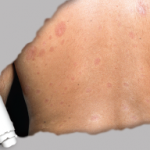New global criteria for pediatric CNO aim to boost research & improve care for this rare autoinflammatory bone disease.


Deborah Levenson |
New global criteria for pediatric CNO aim to boost research & improve care for this rare autoinflammatory bone disease.

Predicting a patient’s disease course is difficult, especially in SLE. A recent study examined the link between a patient’s 2019 EULAR/ACR SLE Classification Criteria score at diagnosis to subsequent disease severity, finding a score of 20 or more may predict a more severe disease course.

Deborah Levenson |
A recent paper illustrates how using different fibromyalgia criteria affects reports of its prevalence.1 Writing in Arthritis Care & Research, researchers found the Analgesic, Anesthetic, and Addiction Clinical Trial Translations, Innovations, Opportunities, and Networks–American Pain Society Pain Taxonomy (AAPT) criteria caused far more people to be categorized as having fibromyalgia than criteria put forth by…

Over the past 18 months, the ACR’s Quality of Care (QOC) Committee has helped produce an impressive number of resources that will help rheumatologists deliver the best possible care. Working through specific projects supervised under its Criteria, Guideline, Guidance, and Quality Measure subcommittees, the QOC Committee has developed new sets of disease criteria, clinical guidelines,…

Carlos Antonio Moura, MD, Ana Luísa Cerqueira de Sant’Ana Costa, MD, & Carlos Geraldo Moura, MD |
The search for knowledge has shaped Western culture and is based on Greek philosophy, especially Aristotelian metaphysics. During the Middle Ages, this knowledge was matured by dialectical scholasticism, culminating, in its later stages, in the amalgam between Islamic science and the neo-Aristotelianism of St. Thomas Aquinas.1 In this way, the foundations of the future scientific…

Larry Beresford |
Evidence-based classification criteria for rare, hereditary, autoinflammatory fevers have been developed to aid clinicians in better understanding the differences between these rare conditions.

Sara M. Stern, MD, Matthew L. Basiaga, DO, MSCE, & Scott M. Lieberman, MD, PhD |
A 14-year-old girl is referred to your office for fatigue and arthralgias. While you’re obtaining her past medical history, she divulges that she has had four episodes of bilateral parotitis, each lasting two weeks. An otolaryngologist evaluated her. She lacked sicca symptoms, had a normal complete blood count (CBC), normal inflammatory markers and a negative…

Immunoglobulin G4-related disease (IgG4-RD) can cause fibroinflammatory lesions in nearly any organ, and diagnosis is challenging. ACR/EULAR classification criteria for IgG4-RD have been developed and validated in a large cohort of patients. These criteria have performed well in tests and should contribute substantially to future clinical, epidemiologic and basic science investigations.

Sindhu Johnson, MD, PhD, FRCPC, has co-chaired the classification and response criteria subcommittee and brings extensive experience in classification and guideline development to her new role.

What happens when systemic sclerosis (SSc) overlaps with other systemic autoimmune rheumatic diseases? Patients with either diffuse cutaneous or limited cutaneous SSc sometimes develop systemic lupus erythematosus (SLE) as well. A new, large cohort study published in the Journal of Rheumatology reveals details on the epidemiology, clinical signs and survival data of SSc-SLE overlap syndrome.1…